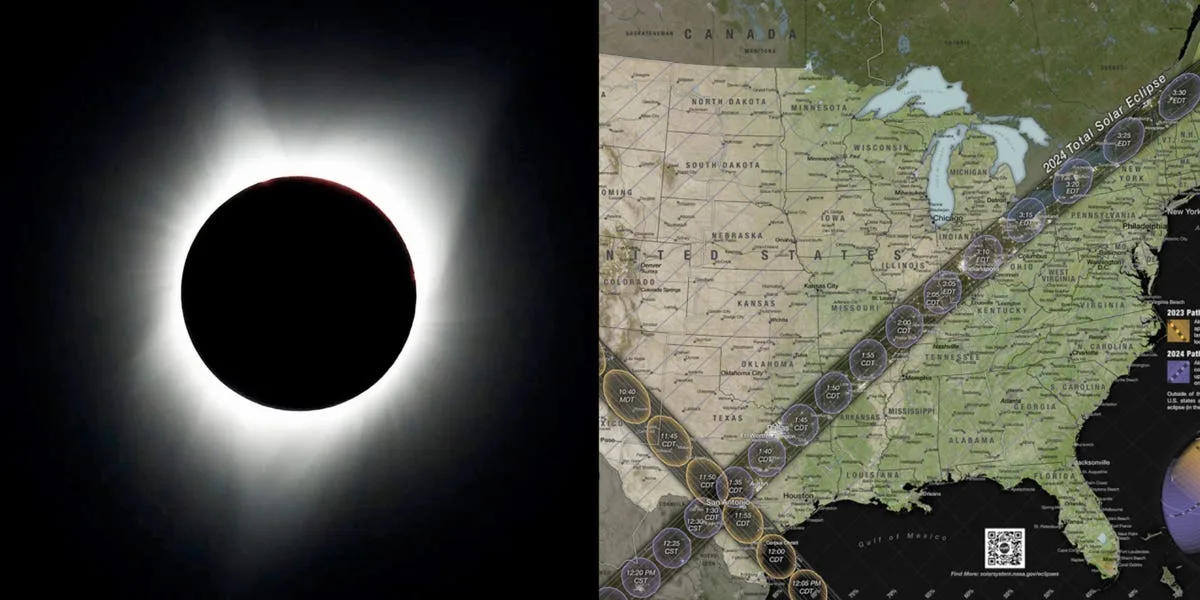Get Ready for the Spectacular Total Solar Eclipse in April 2024
Millions of people in the US will be able to see a total solar eclipse on April 8.
In April 2024, millions of people in the United States will have the opportunity to witness a remarkable celestial event – a total solar eclipse. This natural phenomenon occurs when the moon aligns perfectly with the sun, momentarily obscuring its light and creating a breathtaking display.
Easy Viewing in Highly Populated Areas
One of the unique aspects of this upcoming total solar eclipse is that some highly populated cities in the US will be directly in its path. This means that people living in these areas will have a front-row seat to this awe-inspiring event without having to travel far. Locations such as Dallas, Cleveland, and Indianapolis are perfectly positioned for prime viewing.
The Perfect Opportunity for Citizen Scientists
NASA, along with other scientific institutions, is eagerly enlisting the help of citizen scientists to gather valuable data during the eclipse. This collaborative effort allows individuals to use their telescopes, cameras, Ham radios, and even smartphones to record images, sounds, and observations of the eclipse. By involving the public in this way, NASA aims to collect a wealth of data that will advance our understanding of the sun and its impact on Earth.
Record-Breaking Numbers
The total solar eclipse of April 2024 is expected to be one of the most watched celestial events in history. With over 30 million people in the US alone able to witness this phenomenon simply by stepping out of their homes, it is estimated to be the most populated eclipse viewing ever. The accessibility of the event and the excitement generated by the previous total eclipse in 2017 have contributed to the anticipation surrounding this year’s event.
A Longer, More Dynamic Viewing Experience
This total solar eclipse is predicted to last slightly longer than its predecessor in 2017, giving viewers approximately 3 to 4 minutes to witness the moon’s complete coverage of the sun. Additionally, due to increased solar activity as the sun approaches its solar maximum, experts anticipate a more visually stunning experience. The possibility of a coronal mass ejection (CME) during the eclipse could lead to heightened aurora borealis activity a few days later, creating a magical display in the night sky.
An Unparalleled Scientific Opportunity
For the scientific community, solar eclipses offer a unique chance to conduct experiments and gather data that would otherwise be impossible. With advances in technology and the availability of two sun-scrutinizing spacecraft, scientists will have an unprecedented opportunity to study the eclipse from multiple perspectives. NASA will be utilizing radar, balloons, spacecraft, and jets to conduct experiments and collect data, with a particular focus on the ionosphere, the upper part of Earth’s atmosphere.
This eagerly anticipated event in April 2024 promises to be a truly extraordinary experience for millions of people across the United States. As the moon aligns perfectly with the sun, providing a fleeting moment of darkness during the day, both professional and amateur astronomers alike will be captivated by the sheer beauty and scientific significance of this total solar eclipse.







